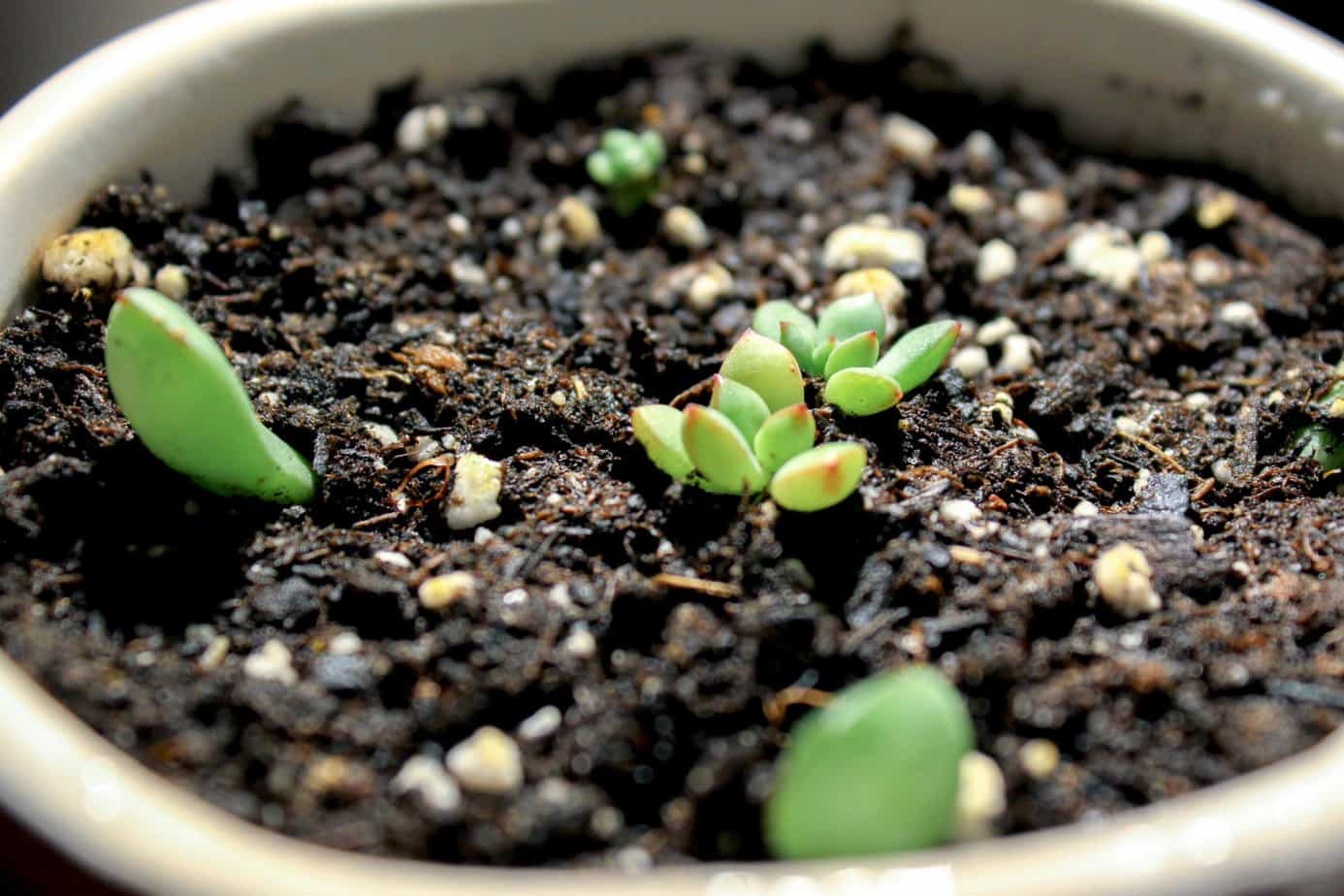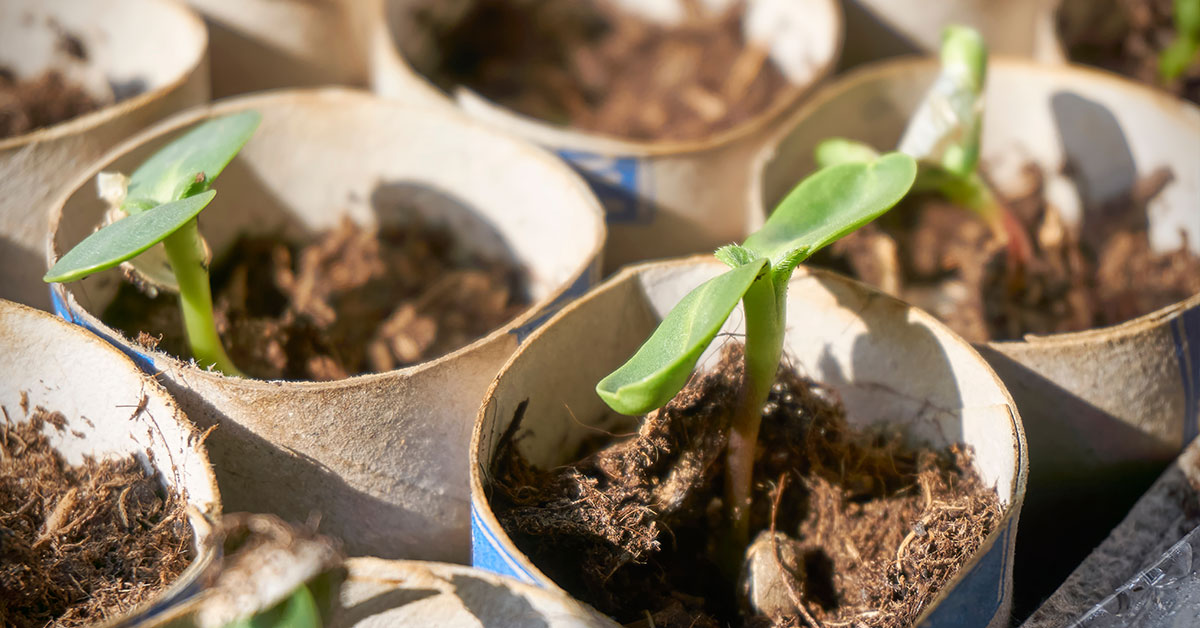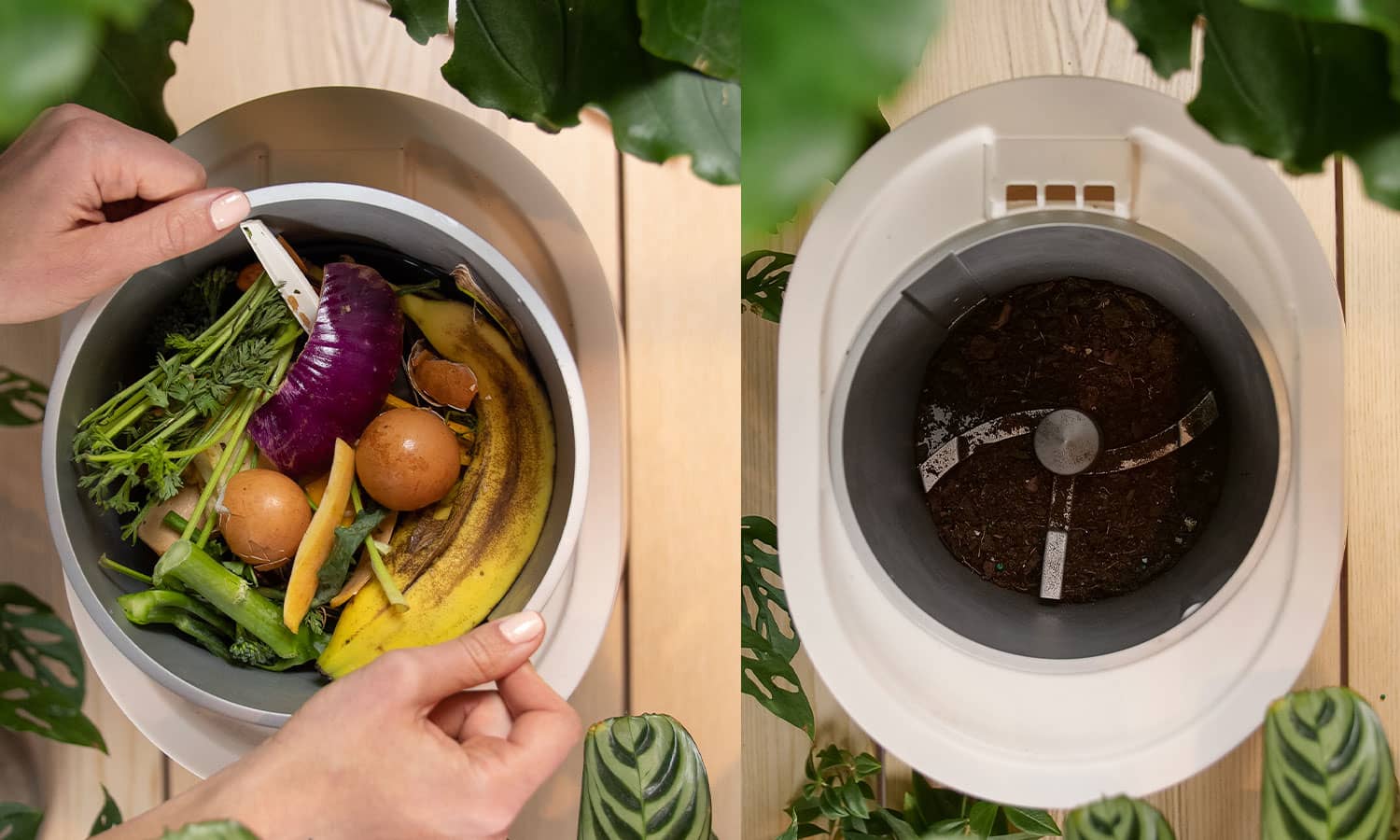Home>Gardening Basics>How Long Does It Take For Fertilizer To Dissolve


Gardening Basics
How Long Does It Take For Fertilizer To Dissolve
Published: August 5, 2023
Discover how long it takes for fertilizer to dissolve and get started on your gardening journey. Learn about the process to achieve healthy soil and vibrant plants.
(Many of the links in this article redirect to a specific reviewed product. Your purchase of these products through affiliate links helps to generate commission for Chicagolandgardening.com, at no extra cost. Learn more)
Table of Contents
- Introduction
- Factors Affecting Fertilizer Dissolution
- Water Solubility of Fertilizers
- Temperature and Fertilizer Dissolution
- Soil pH and Fertilizer Dissolution
- Types of Fertilizers and Their Dissolution Rates
- Slow-Release Fertilizers and Their Dissolution Rates
- Application Techniques and Fertilizer Dissolution
- Environmental Factors and Fertilizer Dissolution
- Conclusion
Introduction
Welcome to our comprehensive guide on fertilizer dissolution! If you’re a gardener or a farmer looking to maximize the efficacy of your fertilizers, understanding how long it takes for them to dissolve is crucial. Proper dissolution ensures that the nutrients in the fertilizer are readily available for plants to absorb and utilize, promoting healthy growth and optimal yields.
When we talk about fertilizer dissolution, we’re referring to how quickly the fertilizer breaks down in water and becomes available for plant uptake. This process is influenced by various factors, including the water solubility of the fertilizer, temperature, soil pH, the type of fertilizer used, application techniques, and environmental conditions.
In this guide, we will explore each of these factors in detail and provide you with the knowledge you need to make informed decisions when it comes to fertilizing your plants. Whether you’re using synthetic chemical fertilizers or organic alternatives, understanding how they dissolve will help you determine the ideal timing and method for application.
Throughout the guide, we will also highlight the importance of considering environmental factors, such as rainfall patterns and soil composition, which can significantly impact the dissolution rate of fertilizers. By understanding and optimizing these factors, you can ensure that your plants receive the nutrients they need exactly when they need them, leading to healthier and more productive growth.
We hope that this guide will serve as a valuable resource for both experienced and novice gardeners and farmers seeking to enhance their fertilization practices. By increasing your understanding of fertilizer dissolution, you can finesse your approach to nutrient application, ultimately reaping the rewards of vibrant, thriving plants.
Factors Affecting Fertilizer Dissolution
Several factors influence the dissolution rate of fertilizers, ultimately determining how quickly they break down and release nutrients into the soil. Understanding these factors can help you optimize your fertilization practices and ensure that your plants receive the right amount of nutrients at the right time.
Water Solubility of Fertilizers: A key factor that affects fertilizer dissolution is its water solubility. Water-soluble fertilizers, as the name suggests, dissolve easily in water, releasing the nutrients rapidly. On the other hand, slow-release fertilizers release nutrients gradually over an extended period, as they are designed to dissolve slowly.
Temperature and Fertilizer Dissolution: Temperature plays a significant role in fertilizer dissolution. Higher temperatures generally accelerate the dissolution process, whereas lower temperatures slow it down. This means that fertilizers will dissolve more quickly in warm water or in warm soil, whereas colder conditions will result in slower dissolution.
Soil pH and Fertilizer Dissolution: The pH level of the soil can also impact fertilizer dissolution. For example, alkaline soils (high pH) can hinder the availability of certain nutrients, as they may become chemically bound to the soil particles. In contrast, acidic soils (low pH) can enhance the dissolution of certain nutrients, making them more readily available to plants.
Types of Fertilizers and Their Dissolution Rates: Different types of fertilizers have varying dissolution rates. For instance, granular fertilizers typically take longer to dissolve compared to powdered or liquid fertilizers. It’s essential to consider the specific characteristics of the fertilizer you’re using to determine its dissolution rate and adjust your application accordingly.
Slow-Release Fertilizers and Their Dissolution Rates: Slow-release fertilizers are designed to gradually release nutrients over an extended period. They often consist of coated granules or pellets that break down slowly, resulting in a controlled release of nutrients. The dissolution rate of slow-release fertilizers depends on multiple factors, including the thickness and composition of the coating and environmental conditions.
Application Techniques and Fertilizer Dissolution: The way in which you apply fertilizers can impact their dissolution rate. Applying fertilizers directly to the soil allows them to come into contact with water and soil microbes, facilitating dissolution. Conversely, applying fertilizers to the foliage of plants may result in slower dissolution, as they are not exposed to moisture and microbial activity as readily.
Environmental Factors and Fertilizer Dissolution: It’s important to consider environmental factors such as rainfall patterns, irrigation practices, and soil composition. Excessive rainfall or irrigation can wash away fertilizers before they have a chance to dissolve, while poor soil drainage can lead to waterlogged conditions that slow down the dissolution process.
By taking into account these factors that influence fertilizer dissolution, you can make informed decisions regarding fertilizer types, application techniques, and timing. By doing so, you can optimize nutrient availability for your plants, maximizing their growth and performance.
Water Solubility of Fertilizers
The water solubility of fertilizers refers to their ability to dissolve in water. This characteristic plays a crucial role in determining how quickly nutrients are released and become available for plant uptake. Water-soluble fertilizers, as the name suggests, readily dissolve in water, making the nutrients easily accessible to plants. This rapid dissolution is especially vital for plants with high nutrient demands or those experiencing nutrient deficiencies.
Water-soluble fertilizers come in various forms, including powdered and liquid formulations. These fertilizers contain essential nutrients such as nitrogen (N), phosphorus (P), and potassium (K), as well as secondary and micronutrients. The nutrients are typically in their ionic form and dissolve easily when mixed with water.
One of the advantages of water-soluble fertilizers is their immediate availability to plants. When applied to the soil or foliage, they quickly dissolve upon contact with water, releasing the nutrients. This rapid nutrient release makes water-soluble fertilizers effective for providing quick boosts of nutrients to plants, particularly during periods of rapid growth or fruiting.
However, the quick dissolution of water-soluble fertilizers also has its limitations. The nutrients released from these fertilizers can be susceptible to leaching, especially in sandy or well-draining soils. Excessive rainfall or over-irrigation can wash away the dissolved nutrients, reducing their effectiveness and potentially causing environmental issues such as water pollution.
Moreover, the fast-release nature of water-soluble fertilizers means that frequent applications may be necessary to ensure a continuous supply of nutrients. This can be labor-intensive and time-consuming, particularly in large-scale farming operations.
Another factor to consider is the risk of nutrient burn. Water-soluble fertilizers, if not properly diluted or applied in excess, can lead to fertilizer burn on plants. This can occur when the concentration of dissolved nutrients becomes too high and damages the roots or foliage of the plant.
Overall, water-soluble fertilizers provide a convenient and effective way to deliver nutrients to plants quickly. They are ideal for providing initial nutrient boosts, correcting deficiencies, and promoting rapid growth. However, they require careful application to avoid overuse or nutrient loss through leaching. By understanding the water solubility of fertilizers, you can make informed decisions on their usage and optimize the nutrient availability for your plants.
Temperature and Fertilizer Dissolution
The temperature of the surrounding environment plays a significant role in the dissolution rate of fertilizers. Generally, higher temperatures accelerate the dissolution process, while lower temperatures slow it down. Understanding the impact of temperature on fertilizer dissolution can help you optimize the timing of fertilizer applications and ensure that the nutrients are available to plants when they need them most.
When the temperature is higher, the molecules in the fertilizer dissolve faster. This is because higher temperatures increase the kinetic energy of the molecules, causing them to move more rapidly and interact more frequently with the surrounding water molecules. As a result, the bonds between the fertilizer particles break more easily, releasing the nutrients into the soil solution.
Conversely, colder temperatures slow down the dissolution rate. The lower kinetic energy of the molecules means that they move more slowly and have fewer chances to interact with the water molecules. As a result, the dissolution process takes longer, and the release of nutrients into the soil solution is delayed.
The impact of temperature on fertilizer dissolution is particularly evident when fertilizers are mixed with water for application. For example, if you are preparing a solution of water-soluble fertilizer for foliar spraying or injecting into irrigation systems, using warm water can help accelerate the dissolution process. This ensures that the nutrients are readily available for plant uptake.
It’s important to note that the temperature of the soil also affects fertilizer dissolution. Soil temperatures tend to be lower than air temperatures, especially in cooler seasons or regions. As a result, fertilizers applied to the soil might dissolve more slowly compared to when they are mixed with warm water. Therefore, it’s crucial to consider the soil temperature when determining the timing and frequency of fertilizer applications.
While temperature is one of the key factors affecting fertilizer dissolution, it’s essential to strike a balance. Extremely high temperatures can lead to excessive drying of the soil, which may hinder the absorption of dissolved nutrients by plant roots. On the other hand, very low temperatures can slow down plant metabolic activity, reducing nutrient uptake even when the fertilizer has dissolved. Therefore, it’s important to consider the optimal temperature range for the specific plants you are fertilizing, while taking into account the temperature sensitivity of the fertilizer being used.
By understanding the relationship between temperature and fertilizer dissolution, you can make informed decisions about the timing and application of fertilizers. Adapting your fertilizer practices to the temperature conditions will help ensure that the nutrients are released and available to plants for optimal growth and development.
Soil pH and Fertilizer Dissolution
The pH level of the soil, which measures its acidity or alkalinity, can significantly influence the dissolution rate of fertilizers and the availability of nutrients for plants. Understanding the relationship between soil pH and fertilizer dissolution is essential for optimizing nutrient uptake and ensuring healthy plant growth.
Soil pH affects fertilizer dissolution because it can directly influence the chemical reactions that occur when fertilizers come into contact with soil moisture. Consequently, the availability and solubility of nutrients can be altered based on the soil’s pH level.
Acidic soils, characterized by a low pH value below 7, can enhance the dissolution of certain nutrients. The acidity of the soil causes chemical reactions that break down the fertilizer particles and release the nutrients into the soil solution. This means that in acidic soils, fertilizers can dissolve more easily, making the nutrients available for plant uptake. However, excessive acidity can also lead to nutrient imbalances and potential toxicity issues.
On the other hand, alkaline soils, characterized by a high pH value above 7, tend to hinder the availability of certain nutrients. Alkalinity can cause nutrients to become chemically bound to the soil particles, making them less soluble and less accessible to plants. This can result in nutrient deficiencies, even if fertilizers are applied to the soil. In alkaline soils, it’s important to consider using fertilizers that are specifically formulated for these conditions or implementing soil amendments to adjust the pH level.
Soil pH can have a profound influence on the availability of specific nutrients. For example, phosphorus (P) is more readily available in acidic soils, while iron (Fe) and manganese (Mn) are often more available in slightly acidic to neutral soils. On the other hand, certain nutrients, such as calcium (Ca), magnesium (Mg), and molybdenum (Mo), are more available in soils with higher pH levels.
Measuring the soil’s pH and adjusting it, if necessary, can help ensure that fertilizers have the optimal conditions for dissolution and nutrient availability. If the soil pH is not within the ideal range for the desired plants, soil amendments or pH adjusters can be used to align the pH level with the specific nutrient requirements.
By considering soil pH in relation to fertilizer dissolution, you can optimize nutrient availability and ensure that plants receive the necessary elements for robust growth and development. Monitoring and adjusting soil pH when needed will help maximize the effectiveness of fertilizer applications and promote healthy, thriving plants.
Types of Fertilizers and Their Dissolution Rates
There is a wide variety of fertilizers available on the market, each with its own characteristics and dissolution rates. Understanding the different types of fertilizers and how quickly they dissolve is essential for making informed decisions about their application and ensuring optimal nutrient availability for plants.
Granular Fertilizers: Granular fertilizers are solid, dry substances consisting of small particles or granules containing concentrated nutrients. These fertilizers typically have slower dissolution rates due to the physical structure of the granules. When applied to the soil, granular fertilizers gradually dissolve as they come into contact with soil moisture. The dissolution rate can be influenced by factors such as the size of the granules and the specific formulation of the fertilizer.
Powdered Fertilizers: Powdered fertilizers are finely ground substances that dissolve relatively quickly when mixed with water or applied to the soil. The small particle size of powdered fertilizers allows for faster dissolution compared to granular fertilizers. This can be advantageous when quick nutrient availability is desired, particularly in situations where plants require immediate nutrition or when fertilizing through irrigation systems.
Liquid Fertilizers: Liquid fertilizers are solutions or suspensions of nutrients that are readily dissolved in water. Due to their liquid form, these fertilizers have high solubility and dissolve quickly, making the nutrients readily available for plant uptake. Liquid fertilizers can be applied to the soil or directly to the foliage of plants, ensuring rapid absorption of nutrients. They are commonly used in foliar sprays or through drip irrigation systems for precise and efficient nutrient delivery.
Controlled-Release Fertilizers: Controlled-release fertilizers are formulated to release nutrients gradually over an extended period. These fertilizers typically consist of coated granules or pellets designed to break down slowly, allowing for a controlled and sustained release of nutrients. The dissolution rate of controlled-release fertilizers depends on various factors, including the thickness and composition of the coating, soil temperature, and microbial activity. These fertilizers offer the advantage of providing a continuous supply of nutrients and reducing the frequency of application.
Organic Fertilizers: Organic fertilizers, derived from natural sources such as animal manure, compost, or plant materials, tend to have slower dissolution rates compared to synthetic fertilizers. The organic matter in these fertilizers needs to decompose or be broken down by soil microorganisms before the nutrients are released and become available to plants. While the dissolution rate may be slower, organic fertilizers provide long-term benefits by improving soil structure, enhancing microbial activity, and promoting overall soil health.
It’s important to consider the specific characteristics and dissolution rates of different fertilizers when determining the appropriate application timing and method. Factors such as the growth stage of plants, nutrient requirements, soil conditions, and environmental factors should be taken into account to ensure optimal nutrient utilization and maximize plant growth and productivity.
Slow-Release Fertilizers and Their Dissolution Rates
Slow-release fertilizers are an alternative to traditional fertilizers, designed to provide a gradual and sustained release of nutrients over an extended period. These fertilizers are formulated with coatings or special materials that control the rate at which nutrients are released into the soil, resulting in a slower dissolution compared to other types of fertilizers.
The dissolution rate of slow-release fertilizers can vary depending on several factors:
Coating Thickness: The thickness of the coating or encapsulation material used in slow-release fertilizers directly affects their dissolution rate. Thicker coatings can slow down the release of nutrients, extending their availability over a more extended period. Thin coatings, on the other hand, allow for faster dissolution and can provide quicker nutrient availability.
Composition of the Coating: The material used as a coating or encapsulation plays a significant role in the dissolution rate of slow-release fertilizers. Different coatings have different solubility properties, which determine how easily they break down in contact with soil moisture. The chemical composition of the coating material influences the rate at which nutrients are released.
Environmental Conditions: Environmental factors such as temperature, soil moisture, and microbial activity can affect the dissolution rate of slow-release fertilizers. Warmer temperatures generally increase the rate of dissolution, while cooler temperatures slow it down. Soil moisture activates the dissolution process, while microbial activity can also contribute to the breakdown of the coating and release of nutrients.
Release Mechanism: Slow-release fertilizers can employ different mechanisms to control nutrient release. Some fertilizers rely on osmosis, where water infiltrates the coating, causing pressure to build up and nutrients to be gradually released. Others utilize diffusion, where nutrients move through the coating via concentration gradients. Different release mechanisms will have varying dissolution rates.
One of the advantages of slow-release fertilizers is their ability to provide a consistent supply of nutrients to plants over time. This controlled release ensures that plants receive a steady, balanced nutrient supply, reducing the risk of nutrient leaching and promoting optimal growth. Slow-release fertilizers are particularly beneficial for longer-growing crops or plants with low nutrient demands.
The slow dissolution rate of these fertilizers also means that they require less frequent applications compared to conventional fertilizers. This can save time, labor, and resources, making slow-release fertilizers a convenient option for those seeking more sustainable and efficient fertilization practices.
It’s important to note that the dissolution rate of slow-release fertilizers can be influenced by soil conditions and environmental factors. Factors such as soil pH, microbial activity, and temperature can impact the breakdown of the coating and the release of nutrients. Therefore, it’s crucial to consider these factors when determining the appropriate timing and application method for slow-release fertilizers.
By understanding the dissolution rates and mechanisms of slow-release fertilizers, you can make informed decisions in selecting and utilizing these fertilizers for long-term nutrient management and plant health.
Application Techniques and Fertilizer Dissolution
The application technique used when applying fertilizers can have a significant impact on their dissolution rate and subsequent nutrient availability. The way in which fertilizers are applied affects how quickly they dissolve and how effectively the nutrients are absorbed by plants. Understanding the different application techniques and their effects on fertilizer dissolution is crucial for optimizing nutrient uptake and promoting healthy plant growth.
Soil Incorporation: When fertilizers are incorporated into the soil, such as through broadcast application or incorporation during planting, they come into direct contact with the soil particles. This promotes rapid dissolution, as the fertilizer is exposed to soil moisture and microbial activity, facilitating nutrient release. Soil incorporation allows for better nutrient distribution and enhances the availability of nutrients for plant roots.
Foliar Application: Foliar application involves spraying the fertilizer directly onto the leaves of plants. This method provides quick access to nutrients, as the fertilizers can be readily absorbed through the foliage. However, foliar application typically results in slower dissolution compared to soil incorporation. The leaf surface acts as a barrier to water, limiting the contact between the fertilizer and moisture required for dissolution. Foliar application works best for providing micronutrients or supplementing nutrient deficiencies, but it may require more frequent applications to maintain nutrient availability.
Drip Irrigation: Drip irrigation delivers water and fertilizers directly to the root zone of plants, providing targeted and efficient nutrient application. Fertilizers can be injected into the water supply, allowing for gradual dissolution and continuous nutrient release as the water is distributed to plant roots. This method ensures that the nutrients are delivered directly to the root zone, leading to efficient absorption and minimizing losses due to leaching or runoff.
Top-Dressing: Top-dressing involves applying fertilizers on the soil surface around the base of the plants. This method allows for slow dissolution and gradual nutrient release. Fertilizers applied as top-dressings can be broken down and drawn into the root zone by natural processes, such as rainfall or irrigation. This approach provides a sustained supply of nutrients over time but requires regular monitoring and reapplication to ensure consistent availability.
Time of Application: The timing of fertilizer application also influences dissolution rates. Applying fertilizers when plants are actively growing and have a higher nutrient demand can enhance dissolution and nutrient uptake. Similarly, timing applications to align with natural rainfall or irrigation events can facilitate the movement of nutrients into the root zone, enhancing their availability to plants.
It’s essential to consider the specific needs of your plants, soil conditions, and environmental factors when selecting the appropriate application technique. Factors such as the desired nutrient release rate, growth stage of the plants, and the potential for nutrient losses should guide your decision-making process. By choosing the right application technique, you can optimize the dissolution and availability of nutrients, ensuring that your plants receive the essential elements needed for healthy growth and development.
Environmental Factors and Fertilizer Dissolution
Fertilizer dissolution is not only influenced by the properties of the fertilizer itself, but also by various environmental factors. Understanding how these factors impact the dissolution process is essential for maximizing nutrient availability and minimizing nutrient losses. Let’s explore some of the key environmental factors that affect fertilizer dissolution.
Rainfall: Rainfall is a significant environmental factor that affects fertilizers’ dissolution. Excessive rainfall can lead to the leaching of dissolved nutrients, washing them away from the root zone before plants can absorb them. This can result in nutrient losses and reduced fertilizer effectiveness. On the other hand, if rainfall is inadequate, it may limit the amount of water available to dissolve and transport nutrients, potentially reducing nutrient accessibility for plants. It’s important to consider rainfall patterns when planning fertilizer applications and adjust timing accordingly.
Irrigation Practices: Similar to rainfall, irrigation practices can impact fertilizer dissolution. Over-irrigation can lead to nutrient leaching, while under-irrigation may hinder the dissolution process by limiting water availability. Proper irrigation management, taking into account soil moisture levels and plant needs, is crucial for optimizing fertilizer dissolution and nutrient uptake.
Soil Composition: Soil composition influences the dissolution rate of fertilizers by affecting water movement and nutrient availability. Sandy soils, which have large particles and low water-holding capacity, may result in faster dissolution and nutrient leaching. In contrast, clayey soils with smaller particles can retain water for longer periods, slowing down the dissolution process. Understanding your soil type and composition can help you tailor your fertilizer application strategies to optimize nutrient availability.
Microbial Activity: Soil microorganisms play a crucial role in fertilizer dissolution. Microbes break down organic matter and enhance nutrient release for plant uptake. The activity of these microbes can be affected by environmental conditions such as temperature and moisture. For example, warmer temperatures generally increase microbial activity, which can accelerate nutrient release and dissolution. Consider these factors when selecting and applying fertilizers to ensure optimal microbial activity and nutrient availability.
Soil pH: Soil pH influences both the dissolution of fertilizers and nutrient availability for plants. pH levels outside the optimal range can impact the solubility of certain nutrients, affecting their dissolution rate. Alkaline soils can reduce nutrient availability, while acidic soils can enhance it. It’s important to monitor and adjust soil pH when necessary to ensure efficient fertilizer dissolution and nutrient uptake.
Temperature: Temperature affects microbial activity, water movement, and chemical reactions involved in fertilizer dissolution. Warmer temperatures generally increase the dissolution rate, promoting faster nutrient availability. Cooler temperatures can slow down the dissolution process. Consider the temperature conditions specific to your region and adjust fertilizer application timing accordingly to optimize nutrient release.
By considering these environmental factors and how they impact fertilizer dissolution, you can make informed decisions about fertilizer application timing, frequency, and methods. This will help maximize nutrient availability for plants, minimize nutrient losses, and promote healthy and productive plant growth.
Conclusion
Fertilizer dissolution plays a crucial role in providing plants with the essential nutrients they need for healthy growth and optimum yields. Understanding the factors that affect the dissolution rate of fertilizers is key to optimizing nutrient availability and ensuring successful fertilization practices.
Water solubility is a fundamental characteristic of fertilizers, with water-soluble fertilizers dissolving rapidly and providing quick nutrient availability. Temperature influences the dissolution rate, with higher temperatures accelerating the process, while lower temperatures slow it down. Soil pH also plays a significant role, with acidic soils enhancing dissolution and alkaline soils potentially hindering nutrient availability.
The type of fertilizer used is another important consideration, as different fertilizers have varying dissolution rates. Granular fertilizers dissolve slowly, powdered fertilizers dissolve more quickly, and liquid fertilizers have high solubility for rapid nutrient release. Slow-release fertilizers provide a controlled nutrient release over time, offering sustained nutrition for longer periods.
The application techniques employed affect the dissolution rate and nutrient availability. Soil incorporation facilitates rapid dissolution, foliar application provides quick access to nutrients, drip irrigation ensures targeted delivery to the root zone, and top-dressing allows for slower, gradual dissolution. Timing of fertilizer application to coincide with plant growth stages and environmental conditions further optimizes nutrient availability.
Several environmental factors impact fertilizer dissolution. Rainfall and irrigation practices affect water availability and nutrient leaching, soil composition influences water movement, microbial activity, and nutrient availability. Soil pH and temperature affect the solubility and dissolution rates of fertilizers.
By considering all of these factors, growers can fine-tune their fertilizer practices to maximize nutrient availability, minimize nutrient losses, and promote healthy plant growth. Understanding fertilizer dissolution empowers gardeners and farmers to make informed decisions regarding fertilizer selection, application techniques, timing, and environmental considerations.
With proper understanding and application of fertilizer dissolution, gardeners and farmers can cultivate thriving plants, achieve desired yields, and contribute to sustainable and efficient nutrient management practices.










